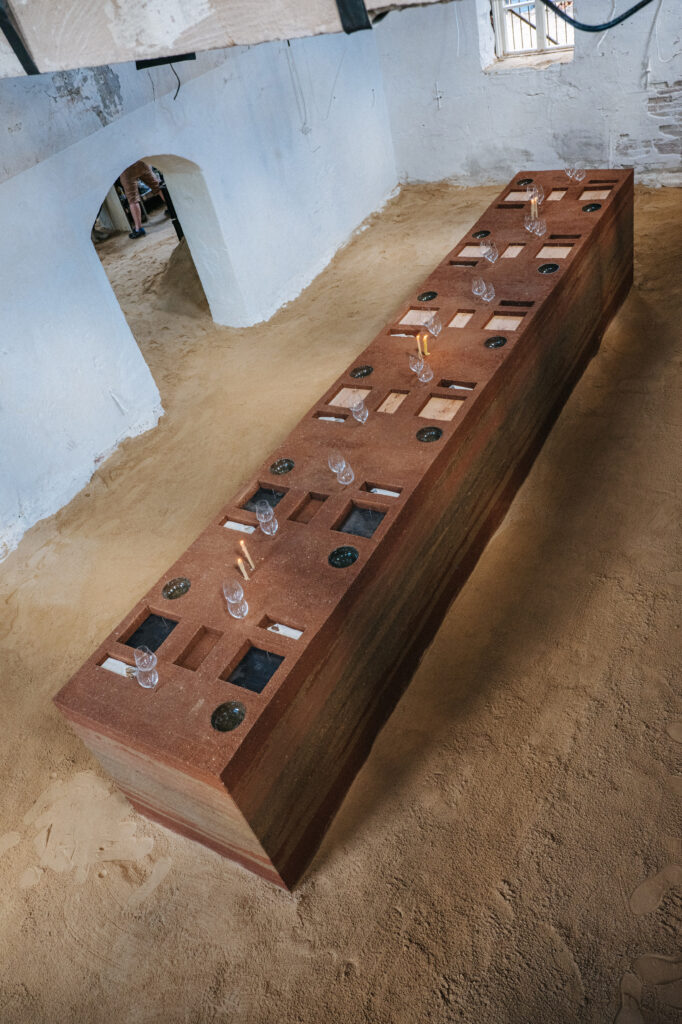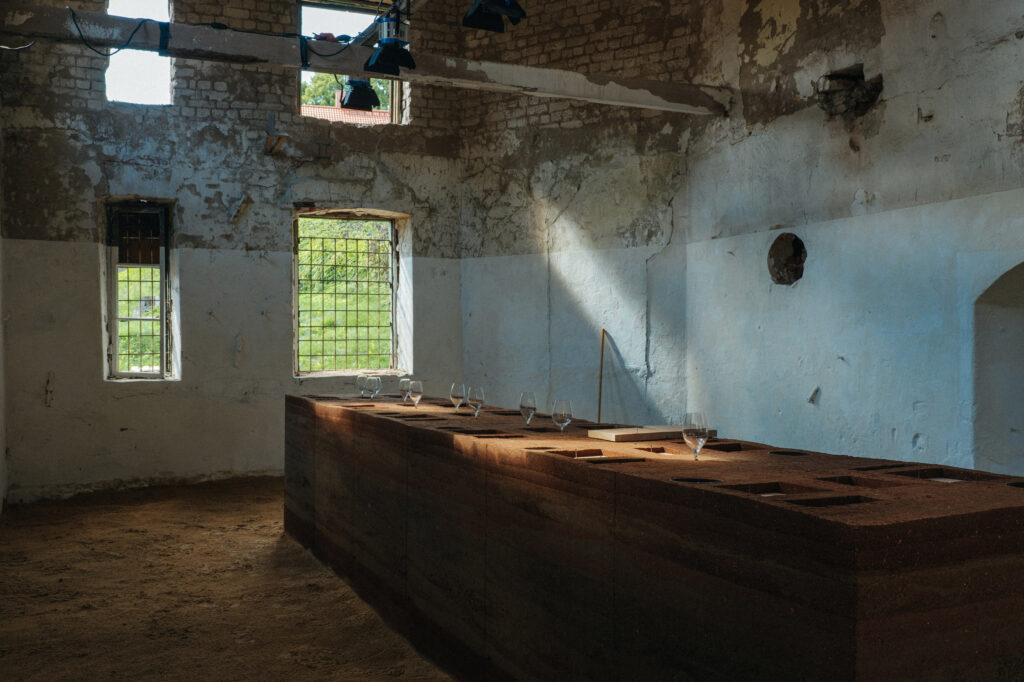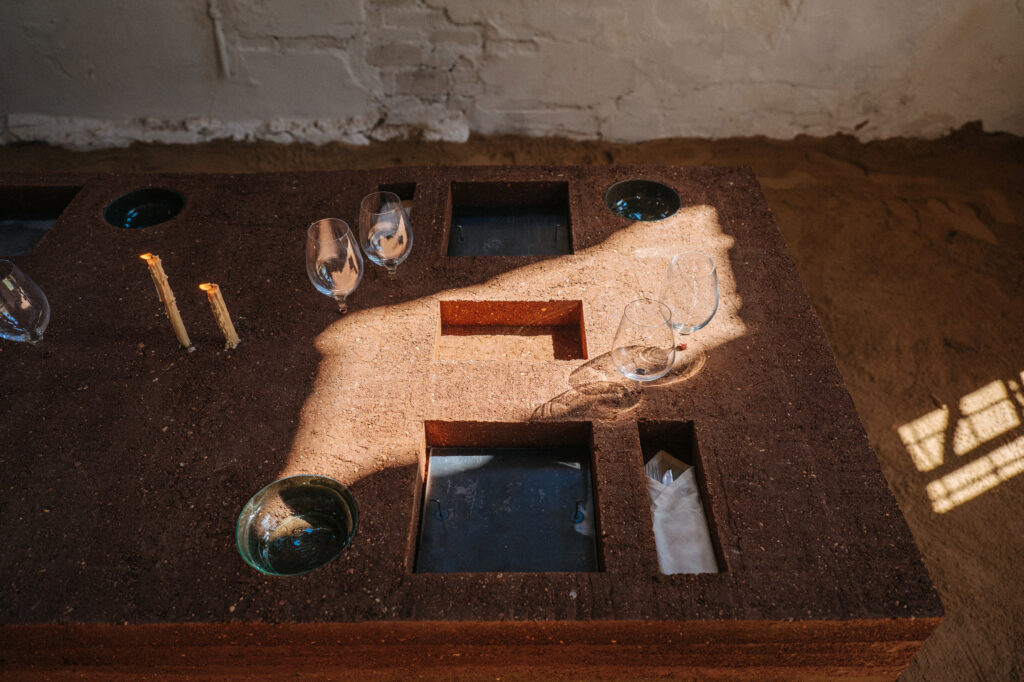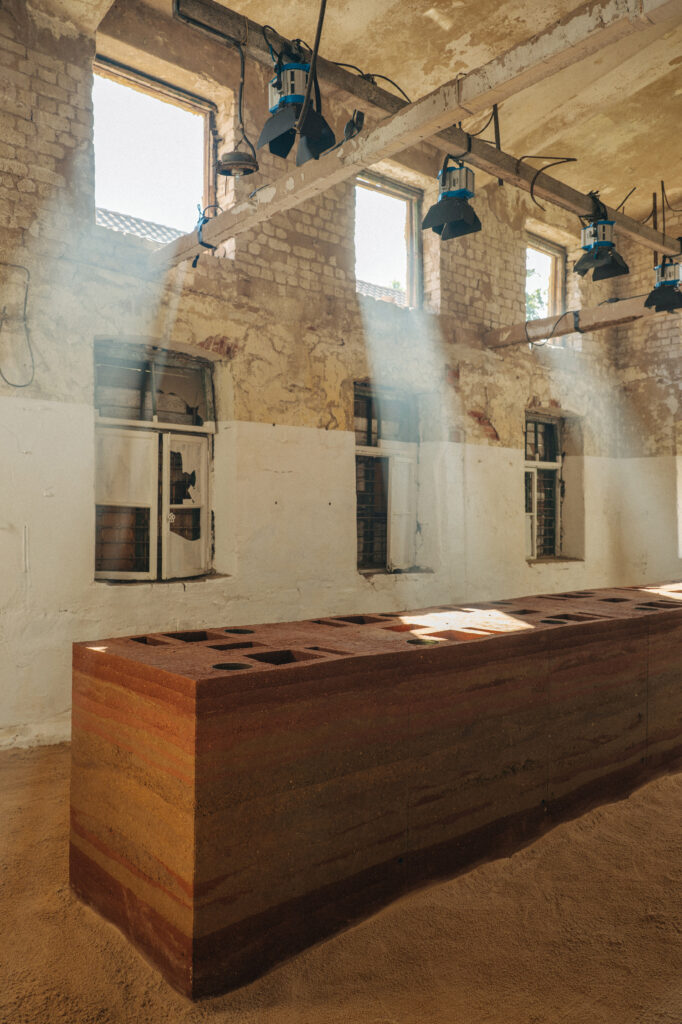In the summer of 2021, the non-profit design studio kuidas.works was invited to take part in the Estonian TV series “Restoran 0”. The programme aims to draw attention to zero waste and recycling philosophies. The plotline involves getting a top-flight restaurant temporarily up and running in a fairly decrepit building in the old town of Viljandi where sausage and other meat products were sold in the late 18th century.
Analysing zero-waste philosophy and practices, the studio team realized that even though recycling and recovering waste would reduce the ecological footprint, at the end of the restaurant’s existence it would still ultimately end up in a landfill or incinerator. Moreover, the recycling process itself is significantly costly. The kuidas.works team decided to broaden the concept of zero waste in the context of the TV show, offering a conceptual work as the solution – a clay table weighing 15 tonnes. When the table was retired, less than 5% of the material used had to be recycled. The restaurant’s recyclables included the wooden trays, plates made from the bottoms of glass jars and steel sheets, and copper pipe sleeves used as drinking glass holders. The base materials – clay as well as sand used on the floor material – can be reused as filler or a natural construction material. At the same time, even if left in the current building, the table and the materials used would not burden the environment in any way.


















































































































































































































